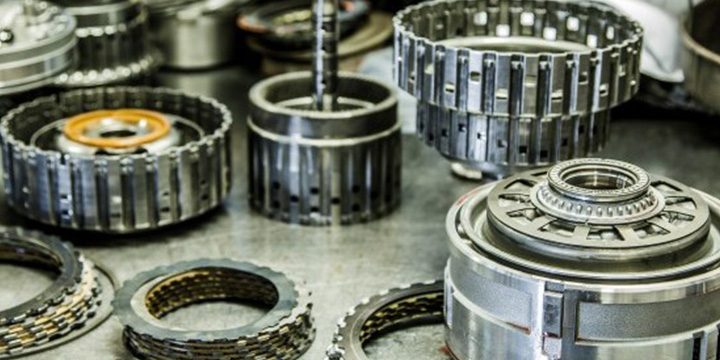Automated Manual Transmission (AMT): Pros and cons
April 29, 2024

An automated manual transmission (AMT) is a type of transmission system that combines the convenience of an automatic transmission with the fuel efficiency and cost-effectiveness of a manual transmission. AMT systems often feature different driving modes, with shift points and response times adjusted to suit different driving conditions. Let’s review AMT transmission and look at the advantages and disadvantages associated with this technology.
What Is AMT Transmission?
The AMT system uses standard gears, which the driver manually shifts using a clutch pedal and gear lever. This system is also automated, however, with sensors, actuators, and electronic control units (ECUs) used to automate the clutch engagement and gear shifting process.
An automated clutch engages and disengages without assistance from the driver, which makes driving easier and more convenient. In addition, electronic controls analyse various inputs such as engine speed, vehicle speed, throttle position, and load conditions to determine the optimal time to shift gears.
Advantages of AMT
There are many benefits associated with AMT. These systems offer more precise gear shifting than automatic systems, which leads to reduced drivetrain losses and better vehicle performance. These systems are easier to use than manual transmission, and they’re more adaptable to driving conditions than automatic transmission.
An automated manual gearbox can also be easier to operate, as it features different driving modes. Examples include economy mode, sport mode, and manual mode. These modes adjust shift points and responsiveness to suit driving conditions and preferences. By enabling faster and more precise gear shifts, AMT systems enhance acceleration, improve traction, and provide a more engaging driving experience.
Performance advantages also provide a number of cost benefits, including improved fuel efficiency and lower maintenance costs. For this reason, AMT transmissions are popular in entry-level and budget-friendly vehicles. Additionally, AMT systems are typically more affordable to manufacture and install compared to conventional automatic transmissions.
Disadvantages of AMT
While AMT systems offer many advantages, they also have some disadvantages. One of the main drawbacks is the potential for lag in gear shifting. There can be a noticeable delay between the driver’s input and the actual gear change, which can lead to a less responsive driving experience. The performance of AMT systems can vary according to conditions, leading to an inconsistent driving experience.
For example, AMT systems may struggle to deliver smooth gear shifts, especially during aggressive acceleration or when towing heavy loads. Additionally, AMT systems can exhibit jerky or inconsistent behaviour when transitioning between gears. AMT systems differ with regard to their driving modes, with some systems having limited flexibility in this regard. Depending on what’s available, this can result in less adaptability compared to traditional automatic transmissions.
AMT systems are more complex than traditional manual transmissions when it comes to maintenance, which can result in higher costs and increased technical issues. Last but not least, AMT systems still suffer from a perception issue among consumers, who are accustomed to the smoothness and responsiveness of traditional automatic transmissions. Some drivers may find AMT systems less intuitive or refined, leading to lower overall user satisfaction.
Comparing AMT with Other Transmissions
The following features highlight the difference between AMT and other transmission systems:
Performance
AMT offers a compromise between manual and automatic transmissions. It offers the convenience of automatic shifting, at the cost of reduced smoothness and slower response times. Manual transmissions offer direct control for a more precise driving experience, but ease of use is compromised. Automatic transmissions are all about smoothness and convenience, at the cost of performance and control.
Control
AMT systems automate the clutch engagement and gear shifting process, combining control over behaviour with the convenience of automation. Traditional manual transmissions offer the highest level of control, with drivers able to manipulate gear selection and clutch operation. Automatic transmission prioritises convenience, with minimal driver involvement allowing for maximum ease of use.
User Experience
The user experience with AMT systems varies depending on the specific implementation. While drivers get the convenience of automatic shifting, gear changes can be accompanied by noticeable delays. Manual transmissions offer a more engaging and interactive driving experience, but more effort and skill is required to operate vehicles smoothly. Automatic transmissions offer seamless gear changes for a relaxed driving experience, but they’re also less engaging and precise.
In many ways, innovative AMT systems offer the perfect compromise between responsive manual transmission and convenient automatic transmission. When choosing a transmission system for your next commercial fleet or personal ride, it’s important to weigh up all relevant pros and cons. As you can see, there are many AMT advantages and disadvantages to consider.
Read on...



